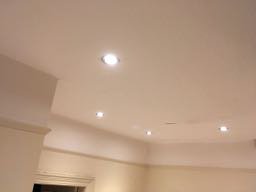El Greyo
Member
- Messages
- 98
- Location
- Oxfordshire
Hello
Our ceiling in our kitchen is lath and plaster but is cracked and sagging in several areas. Ripping the whole thing down and replacing would be messy, time consuming and put the kitchen out of action for several weeks. So we thought we could put tongue-and-groove boards under it (I'd fix battens to the joists). Still quite a lot of work and expensive but it would look nicer, I'd actually quite enjoy doing it and would be less disruptive. But would a wooden ceiling be a fire risk, particularly in a kitchen?
I've done an internet search and not specifically found anything that helps me. My DIY manual describes using tongue and groove as a lining for walls and ceilings but building regs do change.
If a wooden panelled ceiling is ok, then does anyone know of any LED downlights that can be installed in wood? I bought one as a sample and it says only to be installed in plasterboard and not lath and plaster - is that because of a fire risk to the laths?
Thanks
Our ceiling in our kitchen is lath and plaster but is cracked and sagging in several areas. Ripping the whole thing down and replacing would be messy, time consuming and put the kitchen out of action for several weeks. So we thought we could put tongue-and-groove boards under it (I'd fix battens to the joists). Still quite a lot of work and expensive but it would look nicer, I'd actually quite enjoy doing it and would be less disruptive. But would a wooden ceiling be a fire risk, particularly in a kitchen?
I've done an internet search and not specifically found anything that helps me. My DIY manual describes using tongue and groove as a lining for walls and ceilings but building regs do change.
If a wooden panelled ceiling is ok, then does anyone know of any LED downlights that can be installed in wood? I bought one as a sample and it says only to be installed in plasterboard and not lath and plaster - is that because of a fire risk to the laths?
Thanks

